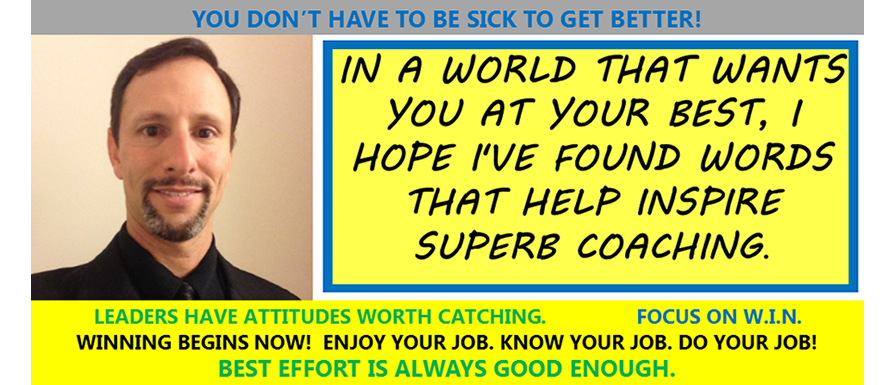MENTAL TOUGHNESS TRAINING
CORE CONCEPTS
Best Effort Now – Success is defined as "the peace of mind that comes from knowing you gave your best" (John Wooden). Therefore, it is achieved by accepting responsibility for controlling the controllables. This is done by trying to figure out how to create an ideal state, commit to a plan, and focus, the executing that plan the best you can at this point in your life. Here is Coach Traub's Diagram of what it takes to give a Best Effort Performance.
Focus – Do you clutter your mind with too much thinking while you’re trying to perform? Focusing on the task-at-hand is a vital performance skill that can be learned with quality practice. You’ll learn to block out regrets about the past and worries about the future, recognize the correct present-tense object for your focus, and find that “trust mode” where you can truly give your best effort.
Positive Self-Talk – Self-Talk is not optional…you’re going to think and the quality of your thoughts is going to determine the quality of your attitudes. Are your thoughts helping you excel or holding you back? This is where the rubber meets the road, and everyone has some good and some bad habits. Identify the good ones to continue and identify the bad patterns so you can make an adjustment. It is exciting to think of what you can achieve when you turn weaknesses into strengths. Your potential is absolutely astounding and training your brain to move towards the things you want can help you fulfill that potential.
Confidence/Trust – Is there anything more important for you to perform the way you are capable of than to trust? To do this, you must not get in your own way by thinking too much and you must be confident. Great athletes consciously control their confidence level. First, they prepare well by working hard and smart. Then, they know how to consciously build confidence with the way they explain life to themselves after good, bad, and neutral outcomes. Their self-talk has a consistently Optimistic Explanatory Style that is always honest, but also emphasizes positives and de-emphasizes negatives.
Self-Control – You must first control yourself if you are going to control your performance. You have little to no control of what goes on around you, but total control of how you respond. Learn to recognize your "red light" and "green light" signals. The goal is get yourself into or close to your ideal state as often as possible so you can be the best version of yourself. Your internal state is comprised of your attitude and your physiology. It is useful to have multiple routines for getting you on track, both before and during competition. Your sport will provide adversity. No one stays in their ideal state all of the time, but consistent competitors come closer.
Perspective – Anyone who's ever "choked," meaning that they played below their potential when they perceived that it was a particularly important situation, should realize this: a performance/self-concept link is extremely damaging to the quality of a performance. Worry is counterproductive because it prevents the athlete from being in the moment and often turns attention towards uncontrollables. If you're worried what others will think of you, you're going to be partially distracted from the task-at-hand. Training in this area will clarify for you the perspectives that allow for the greatest performances. There is plenty of evidence to support the truth of these beliefs. Ultimately, your perspective on performance is your choice, but if you are competing with less information, you may be fighting an unnecessary uphill battle.
Routines – Wouldn’t it be great if you could GUARANTEE giving your best effort every single time? You can. Not best effort ever, of course. That's not realistic. But you can give the best effort you possibly could at this point in time in this situation. By using your experiences effectively, you can build routines that will make sure you are physically and mentally in the right place at the right time. And if you define success in controllable terms (Coach Wooden: "the peace of mind that comes from knowing you did your best,") this means you can guarantee success.
Imagery - The mind/body connection is powerful, but communicating from mind to muscle can be challenging. Learn about the impact imagery has for the athletes you look up to and work to improve your imagery skills. Imagery is free and always available! You can use imagery before, during, and after your performances to maximize growth and winning. By running experiments (games and practices), you will figure out how and when to use imagery most effectively for you.
Goal-Setting Process – You have some big goals already. You want to prevent frustration at the distance of big challenges and prevent complacency from destinations already achieved. Certainly, you are already demonstrating goal-directed behavior often, but mounds of research indicate that writing down S.M.A.R.T. and Controllable goals will help you maintain goal-directed behavior more consistently. “The journey of a thousand miles begins with a single step.” A formal goal-setting process will also ensure that each step is headed in the right direction. This is a process rather than a one-step resolution because monitoring and adjusting goals is critical.
Everyone needs a coach: Bill Gates and Eric Schmidt
For details about individual coaching with Coach Traub, email him at: This email address is being protected from spambots. You need JavaScript enabled to view it..


